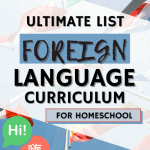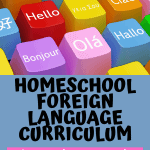Best Homeschool Foreign Language Curriculum for Every Age
Finding the best homeschool foreign language curriculum hasn’t been easy, especially since I don’t speak another language myself.
We’ve tested all kinds of programs over the years, from Spanish and ASL to Japanese and French.
Some were fun but didn’t stick, others made a real difference. This list includes what actually worked for us, with options for different ages, learning styles, and confidence levels (for both kids and parents).
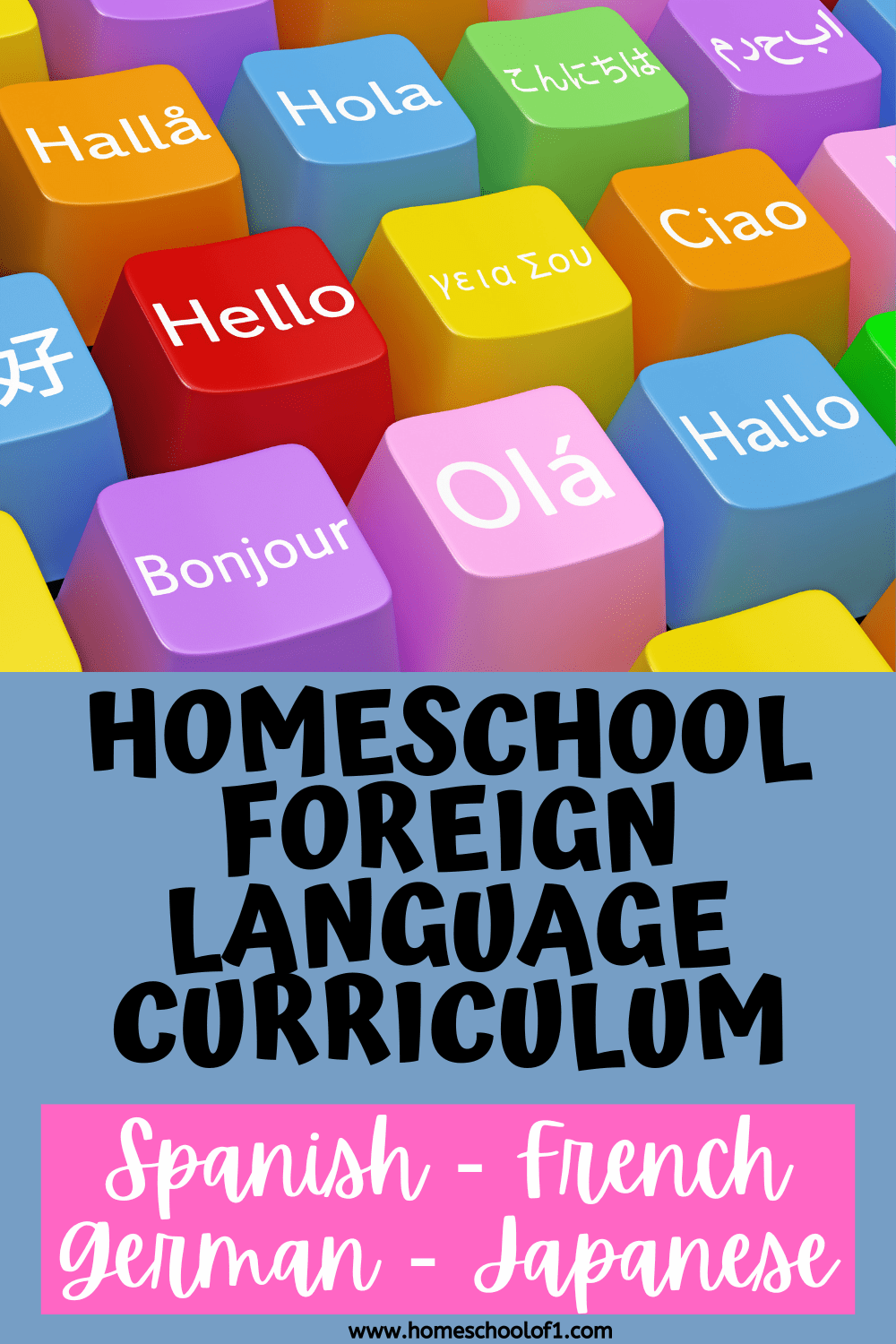
**This post may contain affiliate links. As an Amazon Associate and a participant in other affiliate programs, I earn a commission on qualifying purchases.**
Language Programs That Worked for Us
Choosing a homeschool foreign language curriculum can feel overwhelming, especially if you’re not fluent yourself (I’m not). What helped us most was finding programs that matched how my son likes to learn, fun, flexible, and not too overwhelming.
Below are the foreign language programs we’ve tried and actually stuck with. Some are online classes, some are workbooks, and a few are more hands-off, but all of them made a real difference.
Japanese from Zero
This is the best Japanese homeschool curriculum we’ve found so far. We’re currently using the Japanese from Zero workbook alongside the free YouTube channel, and it’s been great.
The tutor keeps things simple and has a good sense of humor, my son actually looks forward to it, which says a lot.
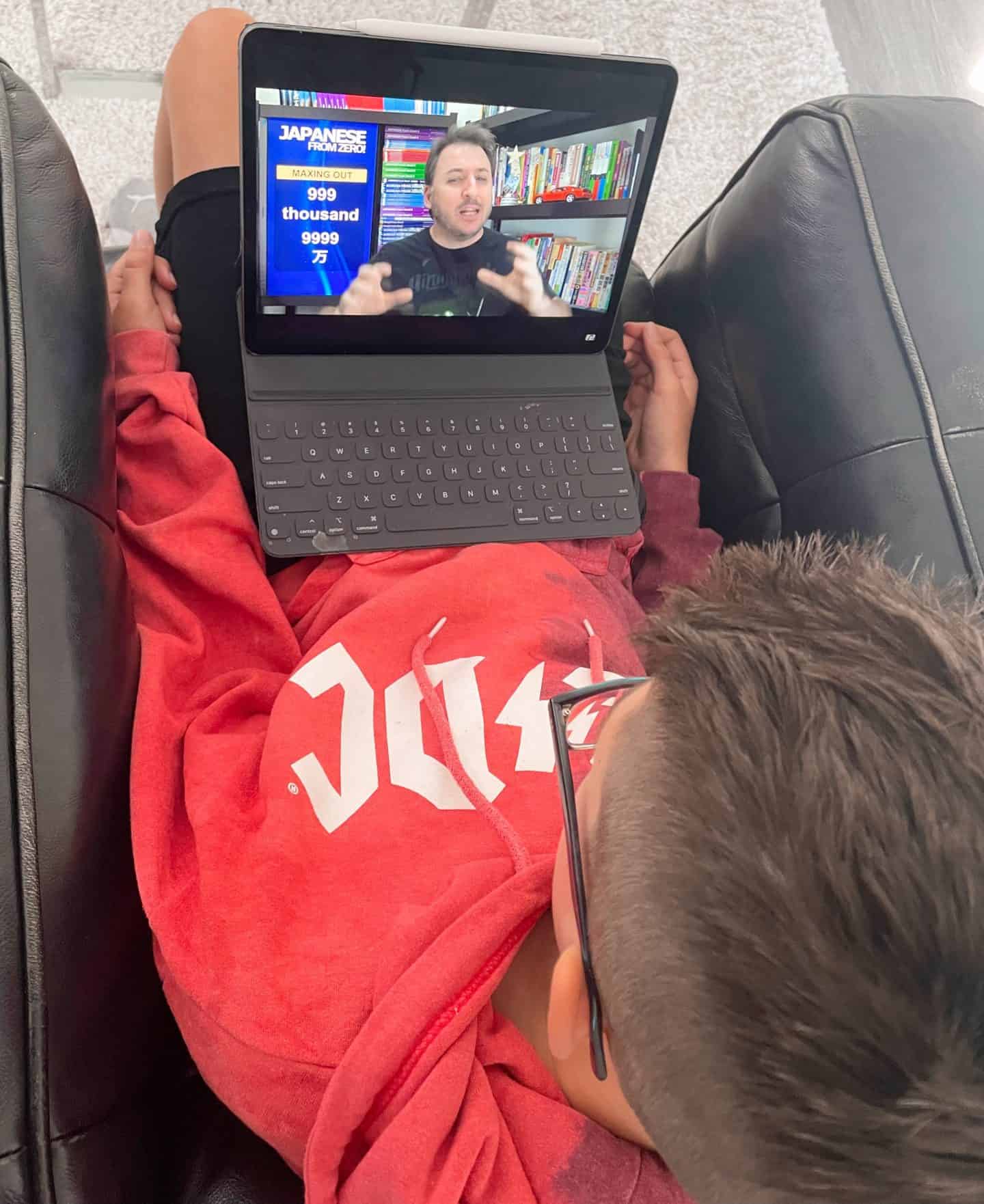
La Clase Divertida
La Clase Divertida is a well-rounded Spanish curriculum that starts with DVDs and hands-on lessons for younger students, then transitions into live classes for older kids.
It’s flexible, engaging, and works well across different ages. We appreciated that it didn’t feel too babyish but also wasn’t overwhelming.
Outschool Language Classes
Outschool has been one of the most flexible options we’ve used for learning languages at home.
There are live classes in Spanish, French, Japanese, ASL, German, and more, taught by independent teachers, so you can choose one that fits your child’s pace and interests.
We’ve dipped into several short-term classes over the years, which made it easy to test the waters without committing long-term.
SchoolhouseTeachers
If you already use SchoolhouseTeachers for other subjects, their language offerings are a great bonus.
They include ASL, Latin, Spanish, French, and even Latvian, all under one subscription.
It’s not as interactive as live classes, but it’s consistent and easy to follow.
For families teaching multiple children or planning long-term, it’s a budget-friendly option that covers a lot of ground.
Lingopie
Lingopie works well as a supplement, especially for kids who enjoy watching TV.
It’s basically streaming shows and cartoons in different languages with interactive subtitles, your child can click on any word to see what it means.
It doesn’t replace formal instruction, but it’s great for reinforcing vocabulary and making language learning feel less like schoolwork.

Visual Latin
Visual Latin is one of the few Latin programs we’ve tried that didn’t feel dry. It uses a mix of video lessons, worksheets, and flashcards to guide students through Latin grammar and reading.
The videos are casual and approachable, which helped my son stay engaged even with a more structured subject.
There’s also a money-back guarantee, so it’s low-risk if you’re just trying it out.
DuoLingo
DuoLingo is still our favorite free app for language practice. It covers a huge range of languages (including Spanish, French, German, and Japanese) and feels more like a game than a lesson.
While it’s not a full curriculum on its own, it’s perfect for reinforcing what kids are learning elsewhere, and ideal for busy days when you want something quick and useful.
Spanish Workbooks
If your child learns best with structure and repetition, a workbook can be a great way to build Spanish skills at home. We’ve tried a bunch over the years, some stuck, some didn’t.
These are the ones that worked well for different ages and learning levels, and you can find even more options in our post on the best homeschool Spanish curriculum.
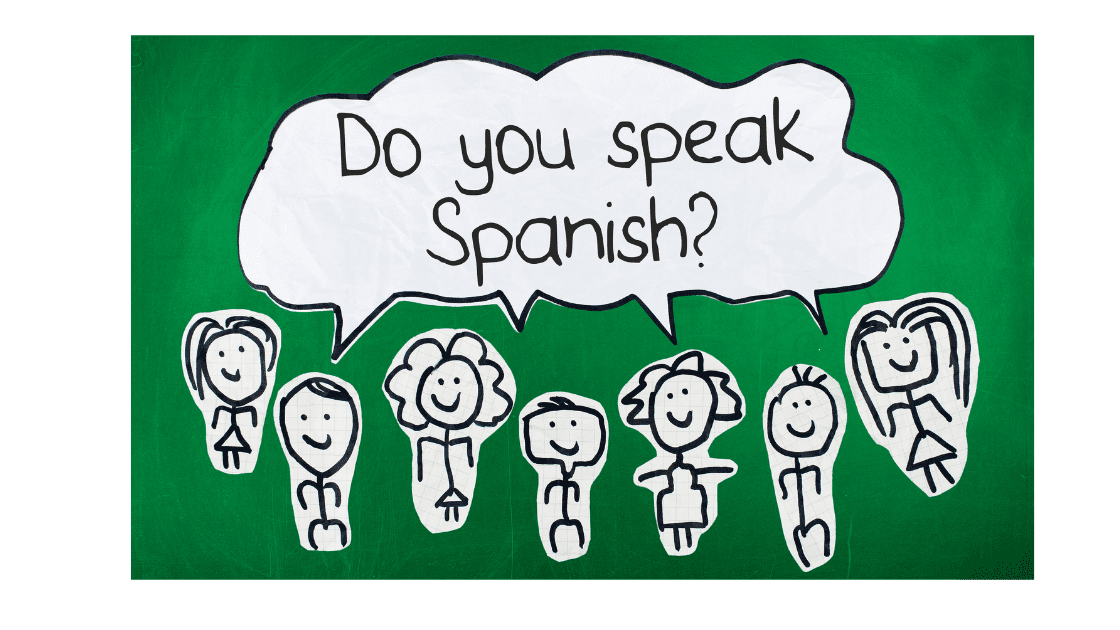
- Skills for Success Spanish Workbook (Grades 6-12): A comprehensive workbook suitable for middle and high school students, with a version available for elementary grades as well.
- Skills Builder Spanish: A versatile workbook designed to build foundational Spanish skills through engaging exercises.
- KS3 Spanish Workbook with Answers: Perfect for older students (ages 12+), this workbook provides structured lessons and answer keys for self-assessment.
- No Nonsense Spanish Workbook: A straightforward, no-frills workbook that focuses on essential vocabulary and grammar skills.
- 10 Minutes a Day Spanish with Carol Vorderman (ages 7-11): This workbook offers bite-sized lessons, making it a fun and manageable way for younger learners to practice daily.
- Spanish Made Easy (ages 7-11): Tailored for early learners, this workbook simplifies Spanish learning with colorful activities and easy-to-follow instructions.
French Workbooks and Online Tools
If your kids are curious about learning French, workbooks and digital resources can be a great way to get started, especially for younger learners who benefit from repetition and structure.
These are the French materials we’ve used and found helpful at different stages:
- Skill Builders French: A solid choice for beginners. The activities are short and approachable, great for building early vocabulary and confidence.
- French Made Easy with Carol Vorderman (ages 7–11): Bright, colorful, and kid-friendly, this one worked really well for us when we were first introducing French at home.
- French Grammar for Beginners: If your child is ready to go a bit deeper, this workbook breaks down grammar step by step without overwhelming them.
- KS3 French Workbook with Answers: Best for ages 12+, this one is more structured and includes self-check tools, which helped my son feel more independent.
- BBC Bitesize French Revision: This free online tool is interactive and well-organized. We’ve used it to reinforce what we’re learning, especially before taking breaks or switching topics.
- Teach It Languages: Ideal for older students (grades 6+), this site offers a mix of free and paid resources. It’s better suited for learners ready to tackle more advanced French reading and writing.
German Homeschool Curriculum
German isn’t always the first language families think to teach at home, but it’s been a fun one for us to explore. These resources made it easier to get started, from playful storybooks to structured workbooks and live online classes.
- Outschool German Classes: We’ve found several beginner-friendly German lessons on Outschool, with live classes that work well for different ages and weekly routines. It’s been one of the easiest ways to add German to our homeschool schedule.
- Cool Kids Learn German: A great starting point for younger kids. The lessons are interactive and lighthearted, perfect for introducing new vocabulary in a way that feels more like play than school.
- KS3 German Workbook with Answers: Designed for ages 12 and up, this workbook is more formal but still manageable. It includes structured lessons and built-in answer keys for independent practice.
- The Fabulous Lost and Found: This sweet picture book uses storytelling to introduce German words in a playful way. It’s ideal for early learners aged 2–7 who are just starting to get curious about new languages.
- Christmas in Germany worksheets: If you want to tie in cultural learning, our free Christmas in Germany printables are a fun way to explore traditions while picking up some seasonal vocabulary.
Sign Language
American Sign Language (ASL) has been one of the most rewarding additions to our homeschool.
It’s a great option for meeting foreign language requirements (just make sure to check your target colleges’ policies). But it also opens up meaningful communication skills and a better understanding of Deaf culture.
We’ve had the best experience with the ASL homeschool curriculum from Mr. D Math. The lessons are easy to follow, even if you have no prior knowledge, and the program goes beyond vocabulary to really help students understand how ASL works as a language.
To support learning at home, we also use a couple of printable sets:
- Our ASL worksheets combine fine art and fingerspelling, kids decode each painting’s title by reading the signs for each letter.
- The sign language alphabet printables are a simple and helpful resource for beginners, with one page per letter showing the corresponding sign.
Both have been fun, low-prep ways to reinforce what we’re learning.
Why Learning a Second Language at Home Has Worked for Us
Adding a foreign language to our homeschool wasn’t just about ticking off a requirement, it’s had real benefits. Here’s what we’ve noticed:
- It supports college prep. Many universities expect at least two years of language study. We started early with Japanese to give ourselves plenty of time to adjust or switch paths if needed.
- It’s helped with focus and critical thinking. Studying ASL and Japanese has strengthened my son’s ability to concentrate and work through challenges in other subjects too.
- It builds real-world skills. Even though we chose Japanese over Spanish (which would be more practical in our area), the ability to pick up and use another language will always be useful.
- It improves overall communication. Learning how to express things in a new language has made my son more thoughtful and clear, even when he’s writing in English.
- It brings in culture. We haven’t done immersion travel yet, but we’ve used books, videos, and printables to explore other cultures in a meaningful way.
If you’re learning a new language at home, I’d love to hear how it’s going. What’s working for you? What’s been challenging? Share your favorite resources in the comments, we’re always looking for new ideas.
Last Updated on 16 May 2025 by Clare Brown

